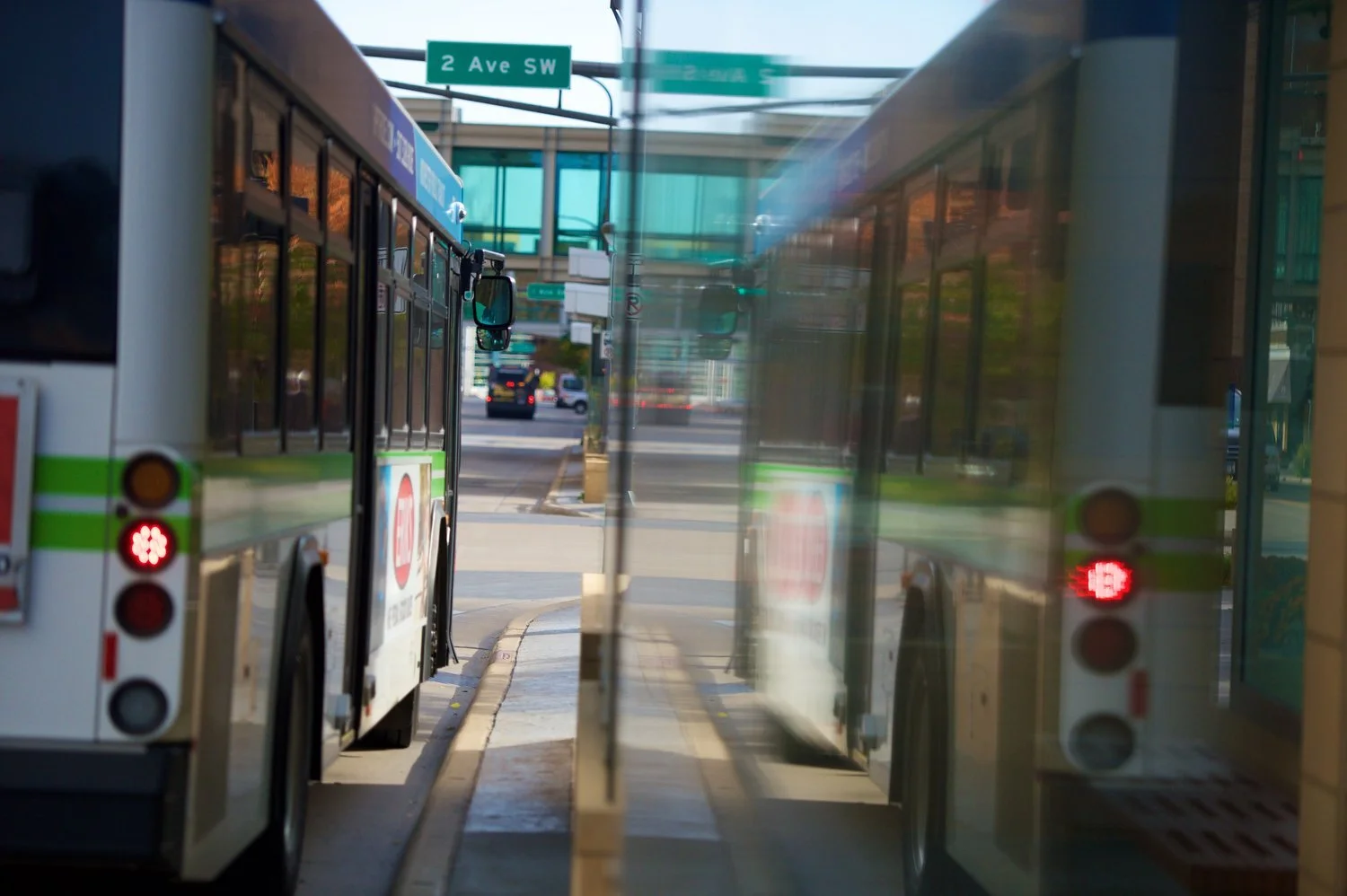Rochester transit system poised for growth
Rochester Public Transit is pushing ahead with an ambitious plan to expand the city's bus system and make transit a more attractive option for commuters. As part of the five-year Transit Development Plan — approved by the city council last May — RPT is introducing "substantial system-wide changes" aimed at boosting frequency and improving ride transfers.
The changes are set go into effect in October. But before that happens, RPT is hosting a series of public engagement sessions, the last of which is scheduled for tonight (Tuesday, Feb. 27) from 4:30 - 7 p.m. at Century High School.
To learn more about the proposed changes to the transit system, we spoke to marketing and outreach coordinator Nicholas Lemmer.
Q: What is the 2017-2022 Transit Development Plan?
A: The TDP is a planning document that outlines the future developments and improvements to service, taking in to account operations, capital funding needs, management, marketing, and implementation process. It is an opportunity to conduct some pretty robust data collection, including current system statistics and performance, peer-city comparisons, and extensive public outreach. The plan is also crated with input from other planning efforts, such as the comprehensive plan now moving through council.
Q: Does it come with additional funding?
A: Yes, funding and capital planning is one of the key aspects of the TDP. It allows us to keep the federal and state agencies from which we receive grant funding informed about our plans, so that they, too, can know what to expect from future grant requests. Operating costs will rise steadily over the life of the plan as new service is introduced and ridership and revenue hours increase. Capital costs and associated funding may be higher in some years as investments in new vehicles and new facilities are necessary.
For example, we will take delivery of 17 new buses in 2018. And we have submitted a state bonding request of $5 million to expand our bus garage in 2018/19. Year 4 of the plan includes a federal funding boost to develop new park-and-ride facilities.
Q: Let's talk about some of the bigger changes riders can expect come October.
A: In essence, our fixed route bus system is being completely re-cast—but cast in the same mold as the current system. So, the first thing people will notice is a new numbering system. Weekday routes will all have a 2 digit route name. Ten routes will now run in the evening and weekends (as opposed to 6 today). Those will have 3 digit names, as to be easily identifiable. Most routes will be very similar to today’s system, with some adjustments based on public comment and optimization.
We are eliminating the variations on routes, such as the 6M, 6A, 6B. Service frequency on those routes is also being standardized to 30-minute or better service for weekday peak, and 60-minute or better service off-peak. The big new service highlight is Route 191—an all new cross-town route which circles Rochester (running in both directions), and which will open up new options and better transfers on certain trips.
Q: How much do you expect the changes to boost ridership?
A: I think the changes will definitely boost ridership. We saw a bump when we introduced Sunday and holiday service last July. Almost every route has seen an increase in ridership. In fact, in 2017 we grew by a whopping 7 percent to over 1.8 million trips! Honestly we think we can achieve 2 million riders in 2018—which would be amazing.
Q: Make the case for transit. Why make improving our bus system a priority for Rochester?
A: Study after study point to robust public transportation as a key factor in loving where you live. And Rochester has an excellent system for a city of our size, with 27 percent more service miles per capita than peer cities! It’s our strong ridership that allows us to reinvest to continue to improve the service—which in turn attracts more riders. We are able to provide our visitors and transit-dependent residents a convenient and dependable way to get around. And with the planned growth in population and jobs, so grows role of public transit in holding Rochester’s place as one of the best places to live in America. Something we should all be proud of.
Q: What are you hoping to get out of tonight's public meeting?
A: Tonight is the last in a series of 4 public meetings meant to introduce these changes. We have an interactive map to share so people can see what their new route number and timing will be. We are eager to hear peoples reaction. We have received may positive comments so far. Also, not every detail has been set in stone. We are always willing to hear about challenges or needs in the community, as it is our goal to provide the best service possible for Rochester.
Q: Are there any other ways transit users can submit feedback?
A: Visit the “Transit Planning” page on at rptride.com. You can review details of the plans, including the interactive map and leave comments on the online form.
Follow Sean on Twitter.
Cover photo by Tom Roster/ Courtesy RPT








